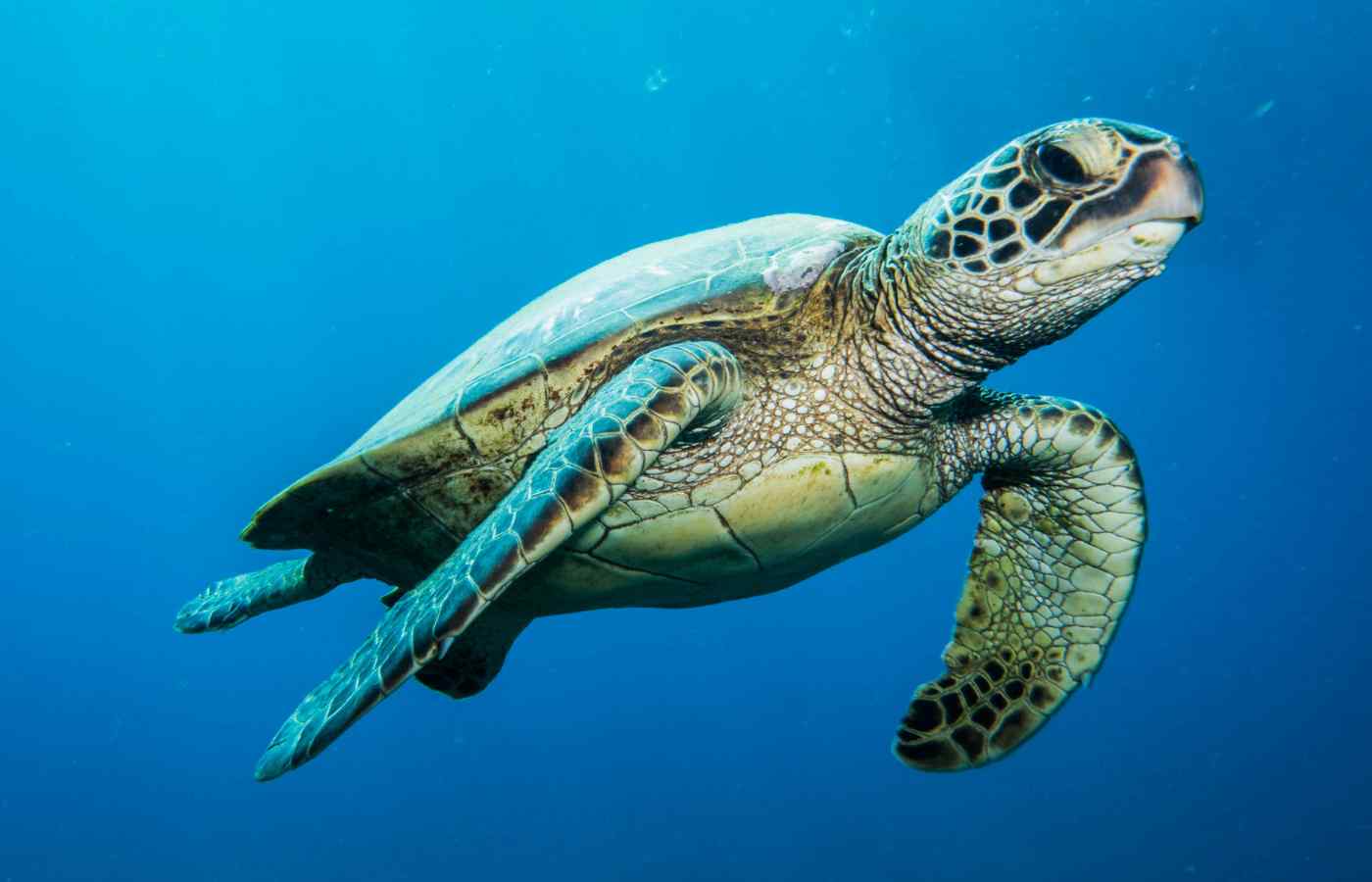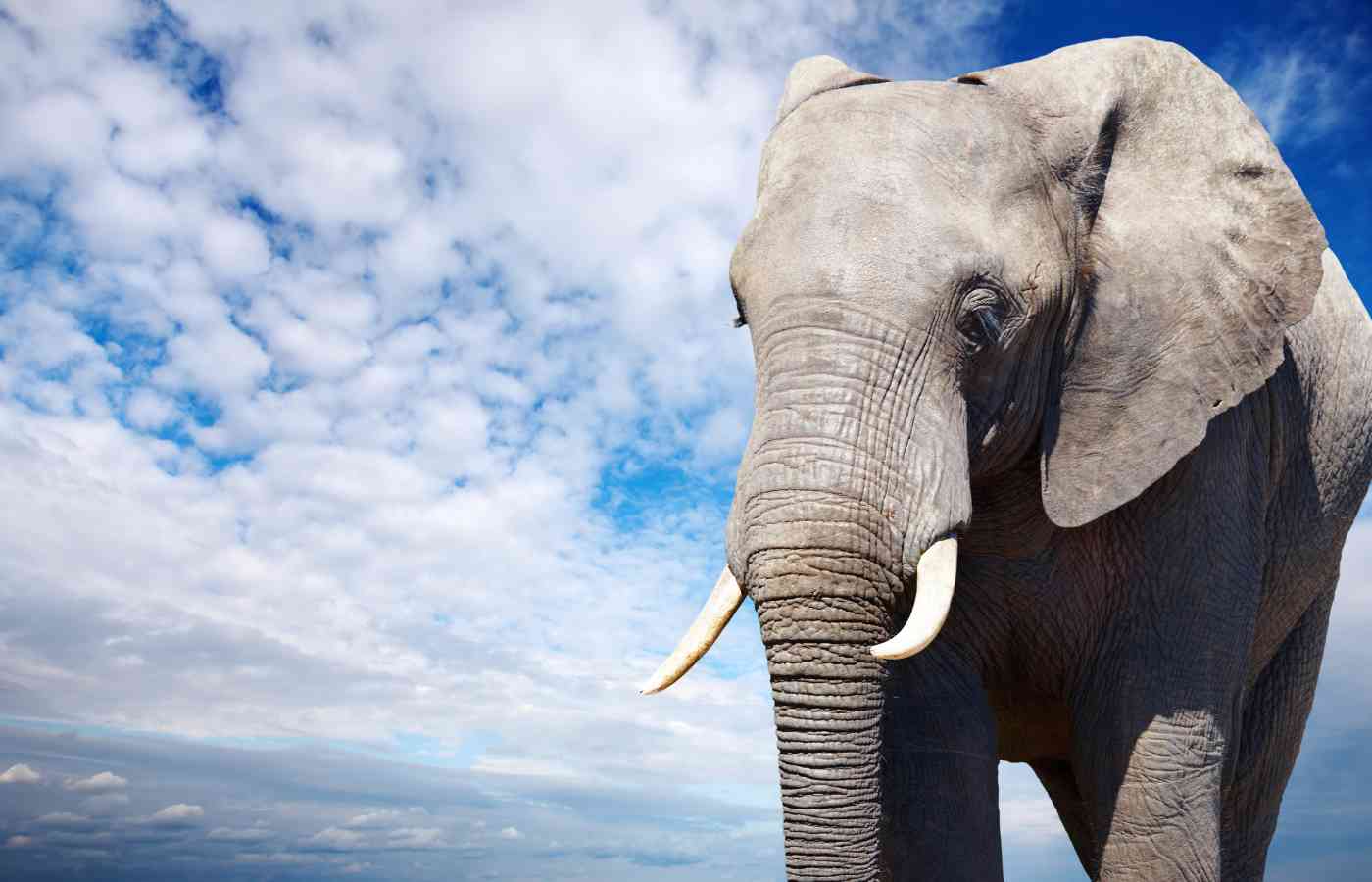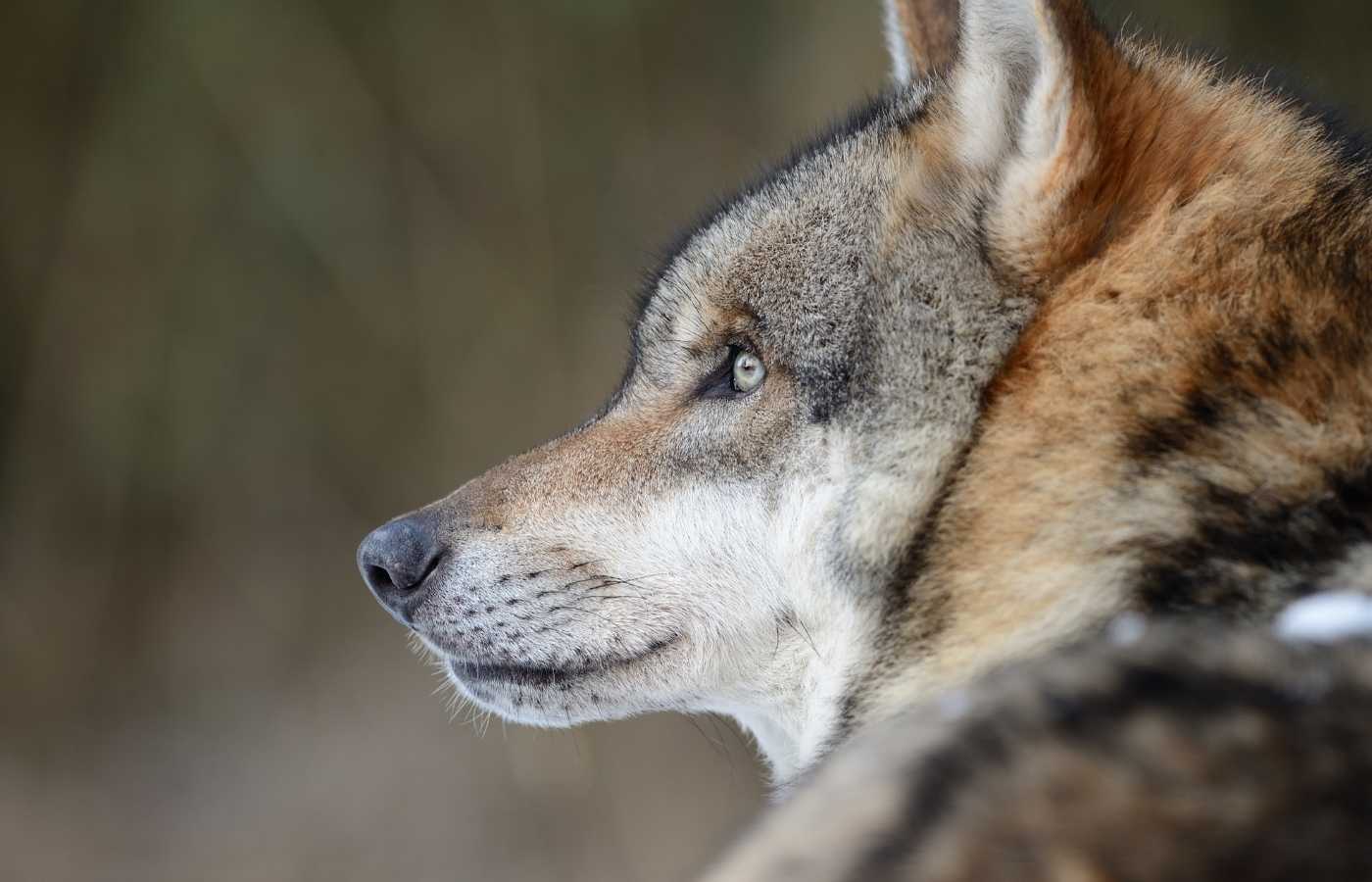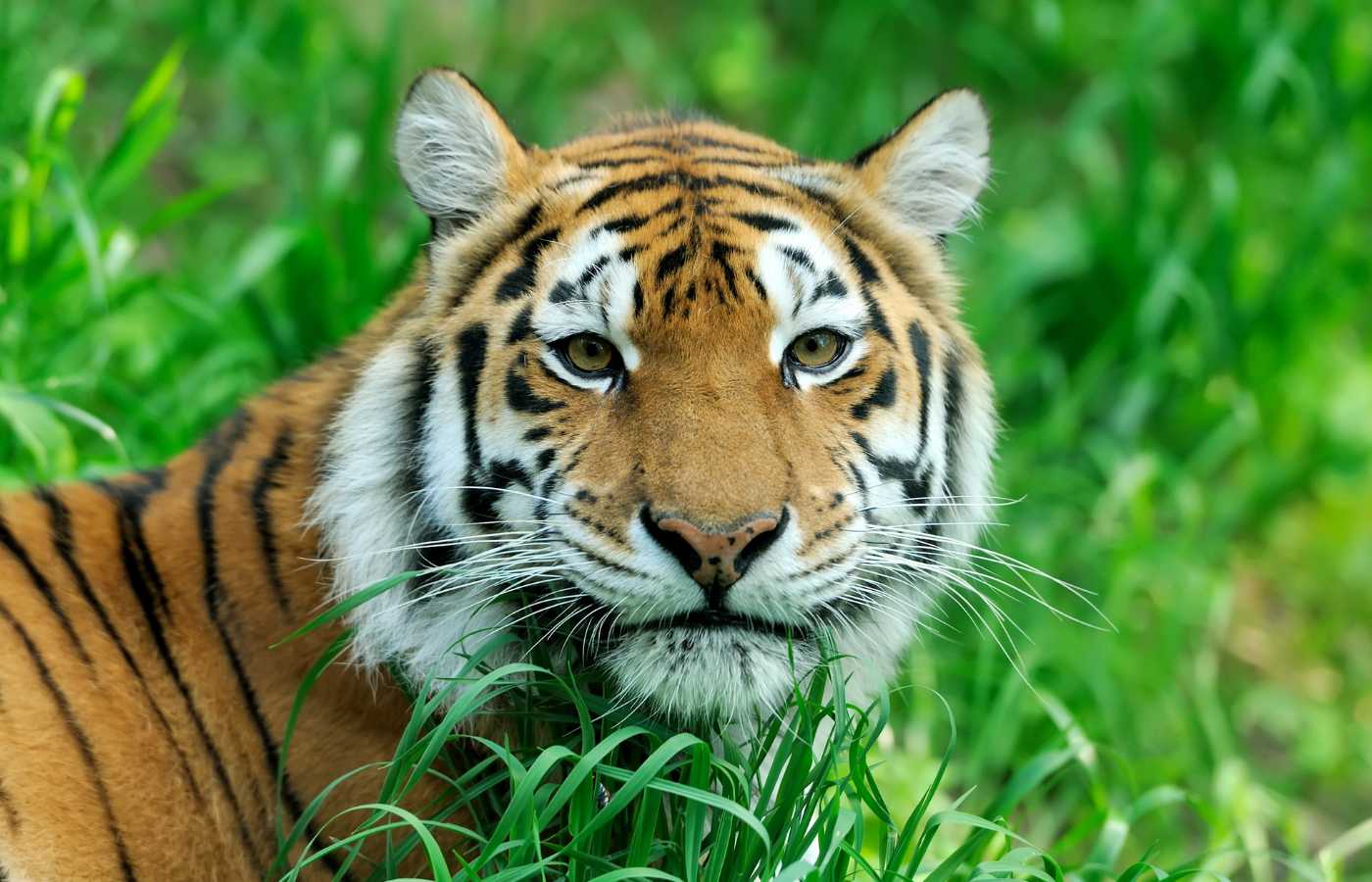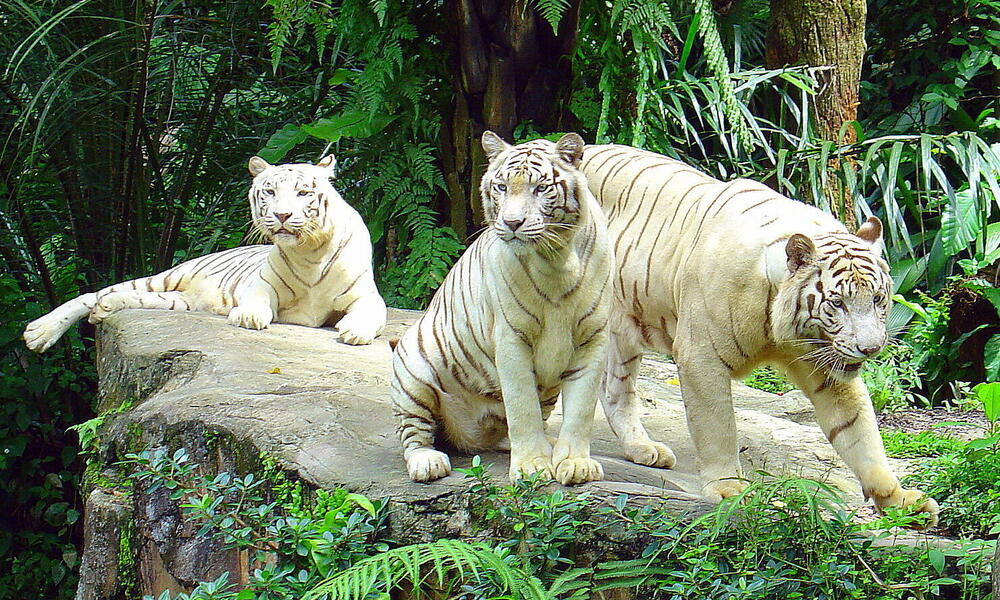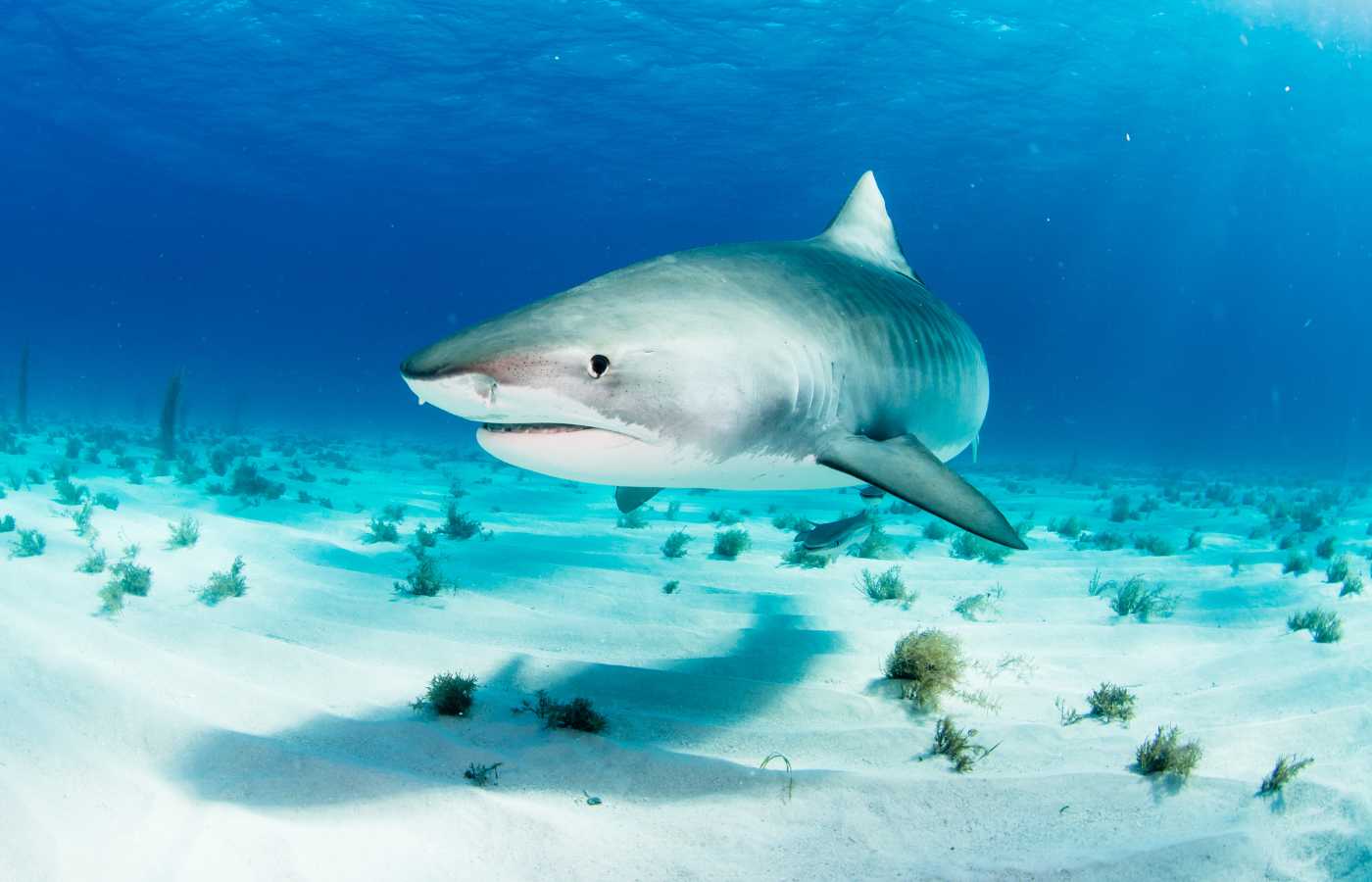Sea turtles are some of the most fascinating animals in the ocean, and there are so many fascinating facts about them that kids will love to learn!
That’s why we’ve compiled a list of 100 surprising sea turtle facts for kids of all ages.
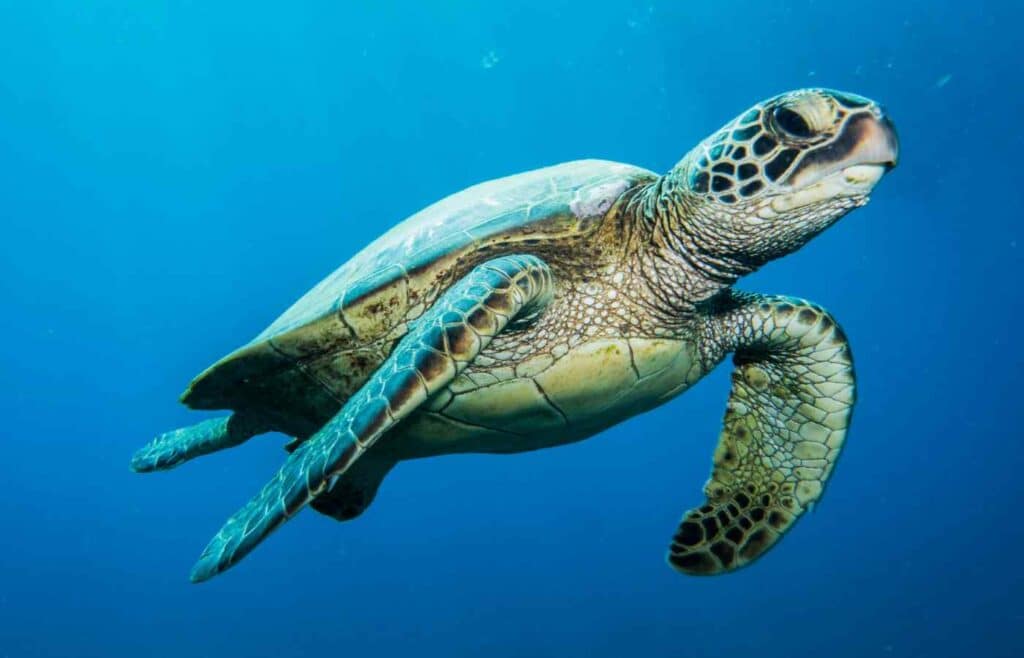
From their ancient history to their unique adaptations, there’s so much to discover about these beloved creatures. So, grab a snorkel and dive in as we explore the wonderful world of sea turtles!
Do you love sea turtles? Our Kauai Family Vacation Guide shares the best things to do with kids in Kauai, including visiting Poipu Beach, where you can witness sea turtles up close.
Sea Turtle Facts
1. Sea turtles have been around for more than 100 million years. (Source: NOAA Fisheries)
2. Sea turtles lived during the time of the dinosaurs and survived when the dinosaurs went extinct. (Source: NOAA Fisheries)
3. Sea turtles can hold their breath for a very long time. Some sea turtle species can hold their breath for up to five hours underwater! (Source: Sea Turtle Conservancy)
4. Female sea turtles have a special ability called “homing,” which means they can navigate back to the same beach where they were born to lay their eggs. Scientists are still trying to figure out how they do this! (Source: National Geographic)
5. Some sea turtles can migrate thousands of miles each year. For example, the leatherback sea turtle can travel up to 10,000 miles from the nesting sites where they lay eggs to their feeding grounds. (Source: World Wildlife Fund)
6. Sea turtles have a unique way of crying. Since they live in saltwater, they can’t produce tears like humans do. Instead, they excrete excess salt through their eyes, which can make it look like they’re crying. (Source: NOAA Fisheries)
7. Sea turtles are important to the health of marine ecosystems. They help maintain the balance of the food chain by eating jellyfish, sea grass, and other animals. Without sea turtles, these populations could become too large and cause problems for other species. (Source: Sea Turtle Conservancy)
8. Sea turtles can be found in all of the world’s oceans, including in coastal waters and estuaries, and nesting beaches in tropical and subtropical regions such as Costa Rica.
9. Some sea turtles can live up to 100 years old! (Source: National Park Service)
10. Adult sea turtles can weigh anywhere from 75 to 2,000 pounds depending on the species. (Source: National Geographic)
11. Sea turtles are reptiles, which means they are cold-blooded. This means their body temperature is regulated by their environment, so they need to bask in the sun to warm up. (Source: National Park Service)
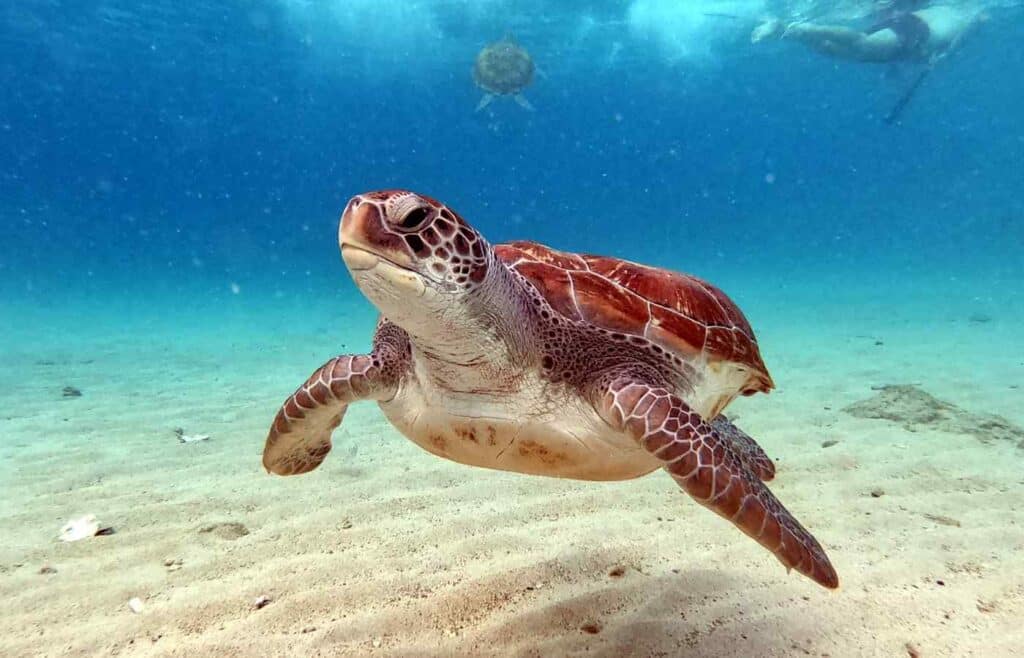
12. Sea turtles face many threats, including habitat loss, entanglement in fishing nets and gear, and pollution. It’s important to protect sea turtles and their habitats to ensure their survival. (Source: World Wildlife Fund)
13. Sea turtles are one of the few animals that can eat toxic sponges. They have a special adaptation in their digestive system that allows them to break down the toxins and safely eliminate them from their body. (Source: National Geographic)
14. Some species of marine turtles have flippers that are as long as their body is wide, which helps them swim long distances in the open ocean. (Source: Sea Turtle Conservancy)
15. Sea turtles are important to many cultures around the world. In some cultures, they are seen as symbols of good luck, wisdom, and strength. (Source: NOAA Fisheries)
16. Sea turtles are vulnerable when they come ashore to lay their eggs. They are more likely to be preyed upon by animals like raccoons, foxes, and birds. (Source: National Geographic)
17. Some species of sea turtles are known for their unique colors and patterns. For example, the hawksbill sea turtle has a beautiful shell with shades of brown, gold, and black, while the green sea turtle has a greenish-brown shell. (Source: Sea Turtle Conservancy)
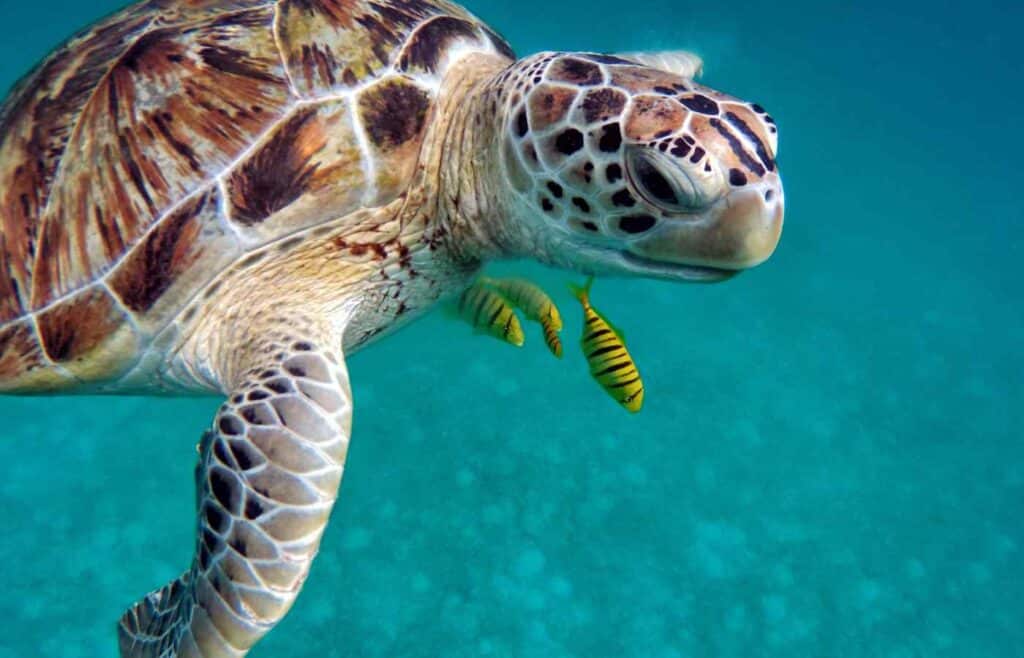
18. Sea turtles and coral reefs have a mutualistic relationship. Sea turtles play an important role in maintaining the coral reefs and coastal waters by eating sea grasses and algae. In turn, coral reefs provide important habitat for sea turtles, offering food and shelter for these amazing creatures.
19. The Olive Ridley Turtle is known for its unique nesting behavior called “arribadas,” which means “arrival” in Spanish. During an arribada, thousands of female turtles come ashore to lay their eggs on the same beach, usually within a few days of each other.
20. Large sharks such as tiger sharks, bull sharks, and great white sharks have been known to attack and eat sea turtles, particularly juveniles and smaller adults.
Source: National Ocean Service, NOAA – https://oceanservice.noaa.gov/facts/turtles-coral.html
Leatherback Sea Turtle
There are many different types of sea turtles. First up, let’s dive into fun facts about the Leatherback Sea Turtle, the largest turtle of them all:
1. The Leatherback sea turtle is the largest sea turtle in the world.
2. Adult Leatherbacks can reach lengths of up to 6 feet (1.8 meters) and weights of up to 2,000 pounds (900 kilograms).
3. Unlike other sea turtles, the leatherback has a soft, rubbery shell covered in skin and oily flesh. This leathery shell allows them to dive to great depths and withstand the pressure of the ocean.
4. Leatherback sea turtles are migratory and can travel thousands of miles each year to reach their nesting beaches.
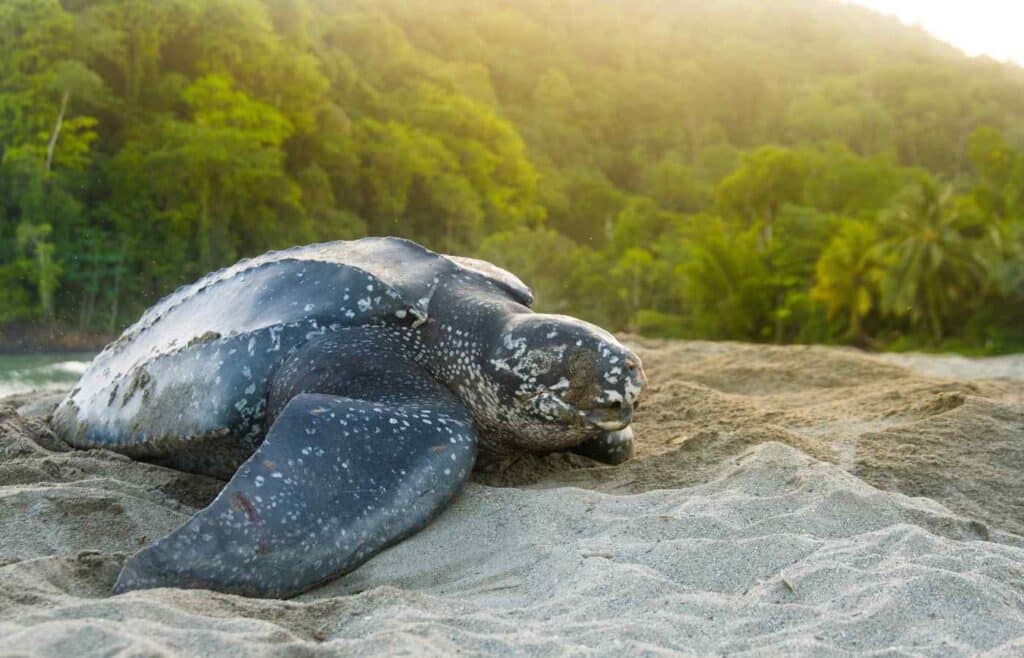
5. Some leatherbacks have been known to cross entire oceans during their migrations.
6. These turtles are the deepest divers among all sea turtles, and can dive to depths of over 4,200 feet (1,280 meters).
7. Leatherbacks are also the most widespread of all sea turtle species, found in all the world’s oceans except the Arctic and Antarctic.
8. The leatherback sea turtle is listed as a vulnerable species by the IUCN Red List of Threatened Species, with threats including habitat loss, entanglement in fishing gear, and ingestion of plastic debris.
9. Leatherback turtles have a unique heat-conserving adaptation in their blood vessels which allows them to maintain their body temperature, even in cold water.
10. The leatherback turtle’s main food source is jellyfish, which they can eat in large quantities without harm, thanks to their flexible esophagus and specialized digestion system.
11. Leatherback sea turtles are known for their long migrations to lay their eggs on sandy beaches. Females may travel thousands of miles to lay their eggs on the same beach where they hatched.
12. Leatherback sea turtles have been known to live for up to 50 years or more.
Sources:
- World Wildlife Fund: https://www.worldwildlife.org/species/leatherback-turtle
- National Geographic: https://www.nationalgeographic.com/animals/reptiles/l/leatherback-sea-turtle/
Green Sea Turtle
13. Green sea turtles can hold their breath for up to five hours. This allows them to spend long periods underwater while foraging for food.
14. The green turtle is the only herbivorous (plant-eating) sea turtle species.
15. Green turtles primarily feed on seagrasses and algae in shallow waters, which gives their fat a greenish color and their name.
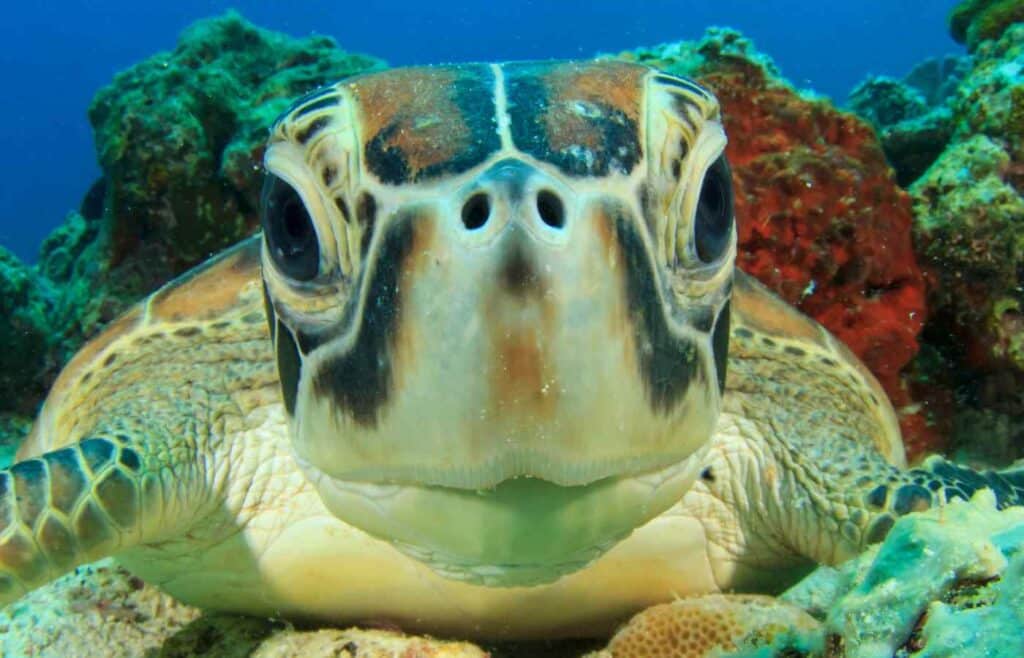
16. Adult Green sea turtles can weigh up to 700 pounds (317 kg) and measure up to 5 feet (1.5 m) in length.
17. The sex of green turtles is determined by the sand temperature where their eggs are laid. Warmer temperatures result in more females, while cooler temperatures result in more males.
18. Green sea turtles migrate thousands of miles each year to reach their nesting beaches. Some populations travel from as far away as South America to lay their eggs on the beaches of Florida.
19. Green sea turtles can sleep underwater by resting their heads on rocks or floating in seaweed.
20. They can also hold their breath while they sleep.
21. The green sea turtle is listed as an endangered species by the IUCN Red List of Threatened Species due to habitat loss, hunting, and fishing gear entanglement.
22. Green sea turtles have been known to live for up to 80 years.
23. The scientific name for the Green Sea Turtles is Chelonia Mydas.
Sources:
- National Geographic Kids: https://kids.nationalgeographic.com/animals/reptiles/green-sea-turtle/
- National Oceanic and Atmospheric Administration: https://www.fisheries.noaa.gov/species/green-turtle
- Sea Turtle Conservancy: https://conserveturtles.org/information-sea-turtles-green-sea-turtle/
- IUCN Red List: https://www.iucnredlist.org/species/4615/11037468
Loggerhead Sea Turtle
The Loggerhead Sea Turtle is the second largest marine turtle in the world, and the most common sea turtle in the Southeastern United States. Here are some interesting facts about them:
24. Loggerhead sea turtles are named for their large, blocky head.
25. Their unique head provides support for their powerful jaws, which they use to crush their food.
26. Loggerhead sea turtles can weigh up to 1,000 pounds (454 kg) and measure up to 3.5 feet (1.1 m) in length.
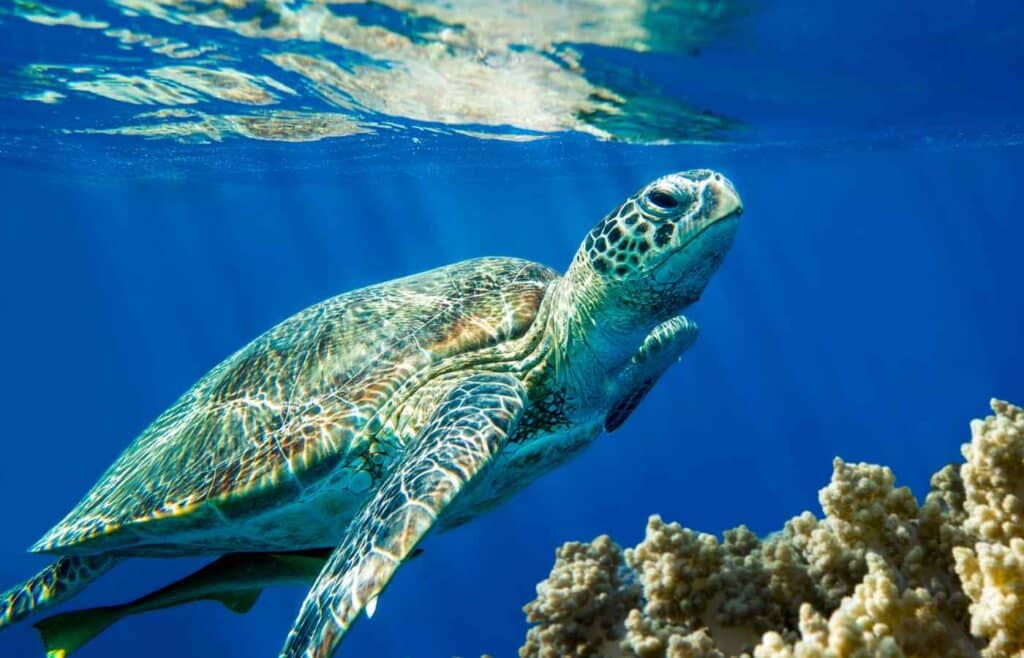
27. Loggerhead sea turtles can dive to depths of up to 1,000 feet (305 m) to find food.
28. The Loggerhead turtle is known for its strong sense of navigation. They use the Earth’s magnetic fields to help them find their way during long migrations.
29. Female loggerhead sea turtles will return to the same beach where they hatched to lay their own eggs. This behavior is called natal homing.
30. Loggerhead sea turtles can travel up to 15 miles (24 km) per hour in short bursts.
31. The sex of loggerhead sea turtles is determined by the temperature of the sand where their eggs are laid. Warmer temperatures result in more females, while cooler temperatures result in more males.
32. Loggerhead sea turtles are listed as a threatened species under the U.S. Endangered Species Act. They face threats from habitat loss, fishing gear entanglement, and marine debris.
Sources:
- Sea Turtle Conservancy: https://conserveturtles.org/information-sea-turtles-loggerhead-sea-turtle/
- National Geographic Kids: https://kids.nationalgeographic.com/animals/reptiles/loggerhead-sea-turtle/
- National Oceanic and Atmospheric Administration: https://www.fisheries.noaa.gov/species/loggerhead-turtle
Hawksbill Sea Turtle
33. The hawksbill sea turtle is named for its narrow, pointed beak, which looks like a bird’s beak.
34. Hawksbill turtles are known for their beautiful shell, which is made up of overlapping scales called scutes.
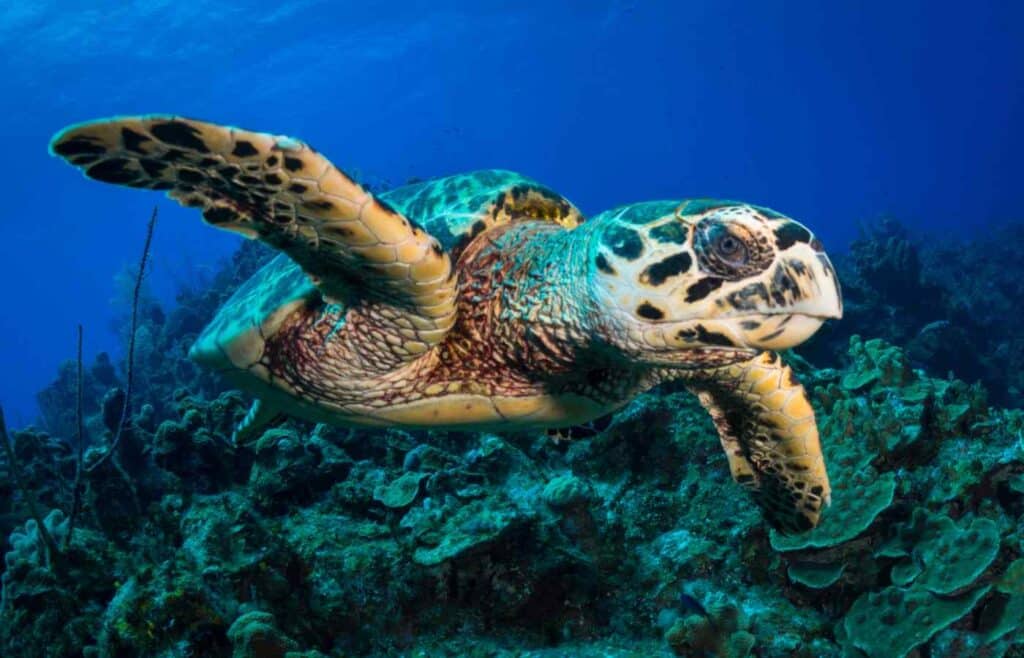
35. Their scutes are often used to make jewelry and other decorative items, which has contributed to the decline of hawksbill populations.
36. Hawksbill sea turtles are one of the few animals that eat sea sponges. This diet helps keep coral reefs healthy by preventing sponges from overgrowing and competing with corals for space.
37. The hawksbill sea turtle is a critically endangered species, with populations declining by up to 80% over the past 100 years.
38. Hawksbill sea turtles are important to many indigenous cultures around the world, who use their shells and other parts for traditional crafts and ceremonies.
39. Like other sea turtles, female hawksbills return to the same beach where they were born to lay their eggs. This behavior is called “natal homing.”
40. Hawksbill sea turtles can hold their breath for up to five hours underwater.
Sources:
- National Geographic Kids: https://kids.nationalgeographic.com/animals/reptiles/sea-turtle/
- Sea Turtle Conservancy: https://conserveturtles.org/information-sea-turtles-hawksbill-sea-turtle/
- World Wildlife Fund: https://www.worldwildlife.org/species/hawksbill-turtle
Flatback Sea Turtle
41. The flatback sea turtle is the only species of sea turtle that is found solely in Australian waters.
42. It is named for its flat, streamlined shell that helps it navigate the shallow waters and coastal habitats where it lives.
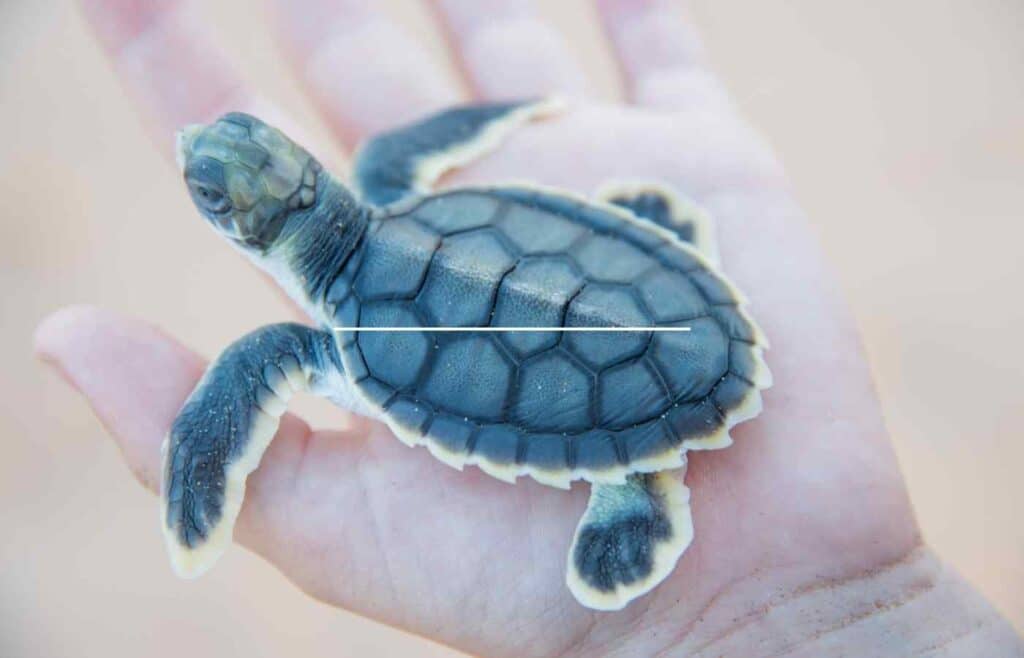
43. Smallest of the sea turtles: The flatback sea turtle is the smallest of the seven species of sea turtles, with adults typically measuring around 2-3 feet (60-90 cm) in length and weighing around 150 pounds (70 kg).
44. Flatback sea turtles have a unique nesting strategy compared to other sea turtles. They typically lay their eggs on sandy beaches in small groups, rather than the large-scale mass nesting events that are characteristic of other sea turtle species.
45. Short migrations: Unlike other sea turtles that migrate thousands of miles between their feeding and nesting grounds, flatback sea turtles have relatively short migration distances, usually only traveling a few hundred miles along the coast.
46. Like all sea turtles, flatback sea turtles face a range of threats from human activity such as habitat destruction, pollution, and overfishing. However, due to their restricted range and unique nesting habits, flatback sea turtles may be particularly vulnerable to these threats.
Sources:
- Australian Government Department of Agriculture, Water and the Environment. (2021). Flatback turtle. Retrieved from https://www.environment.gov.au/marine/marine-species/marine-turtles/flatback-turtle
- Sea Turtle Conservancy. (n.d.). Flatback sea turtle. Retrieved from https://conserveturtles.org/information-sea-turtles-flatback-sea-turtle/
Baby Sea Turtle
47. Baby sea turtles are called hatchlings, and they are about the size of a silver dollar when they hatch.
48. The temperature of the sand where sea turtle eggs are laid can determine the sex of the hatchlings. Warmer temperatures result in more females, while cooler temperatures result in more males.
49. Young turtles are born with a special ability to navigate using the Earth’s magnetic fields. This helps them find their way to the ocean after hatching.
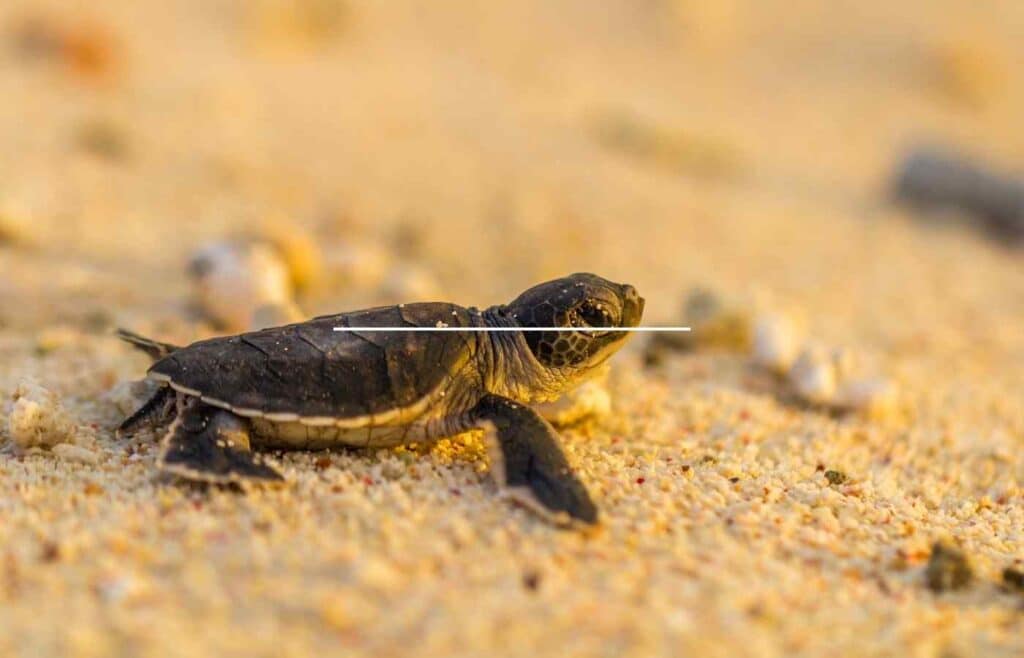
50. Sea turtle hatchlings are only about 2-3 inches (5-7.5 cm) long and weigh less than an ounce (28 g) at birth.
51. Young sea turtles are extremely vulnerable to predators, including birds, crabs, and fish.
52. Only a small percentage of hatchlings will survive to adulthood.
53. Sea turtle hatchlings spend their first few years of life floating and swimming in the open ocean. They are carried along by ocean currents and may travel thousands of miles during this time.
54. Sea turtle hatchlings use a special tooth called a caruncle to break out of their eggs.
55. The first few years of a sea turtle’s life are called the “lost years” because scientists know very little about what young sea turtles do during this time.
Sources:
- Sea Turtle Conservancy: https://conserveturtles.org/information-sea-turtles-sea-turtle-life-cycle/
- National Geographic Kids: https://kids.nationalgeographic.com/animals/reptiles/sea-turtle/
Sea Turtle Mating
Sea turtle mating is an interesting and complex process. Here are some surprising facts about it:
56. Sea turtles use vocalizations, touch, and body language to communicate during mating, and males often compete for the attention of females.
57. Male sea turtles have long claws on their front flippers that they use to grip onto the female’s shell during mating.
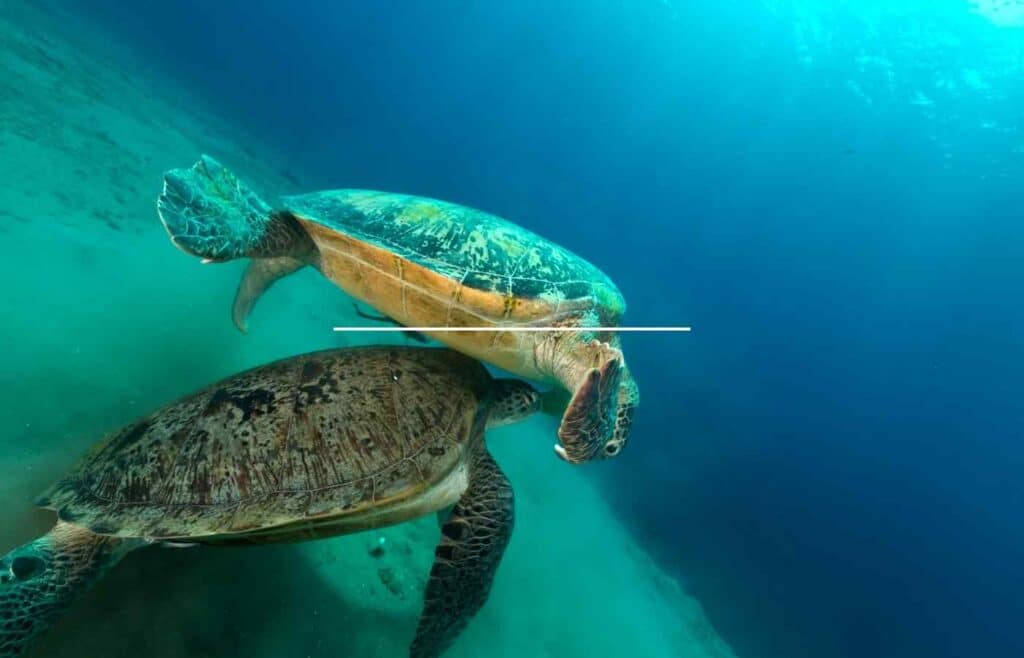
58. Mating often takes place in shallow waters near the nesting beach, but some species travel long distances to find mates.
59. Female sea turtles can store sperm from multiple males for long periods of time, allowing them to fertilize multiple clutches of eggs.
60. Mating can be dangerous for sea turtles, as they are vulnerable to predators and boat strikes while mating in shallow waters.
61. Some male sea turtles are known to engage in “nuzzling” behavior, where they gently bite the female’s neck or head during mating.
62. Mating is a rare and elusive event for sea turtles, and little is known about the mating habits of some species.
Sources:
National Oceanic and Atmospheric Administration. (n.d.). Sea turtle reproduction. Retrieved from https://www.fisheries.noaa.gov/species/sea-turtles#reproduction
Sea Turtle Conservancy. (n.d.). Sea turtle mating. Retrieved from https://conserveturtles.org/information-sea-turtles-sea-turtle-mating/
Sea Turtle Shells
Sea turtle shells, or “carapaces,” are fascinating and important features of these animals. Here are some interesting facts about sea turtle shells:
63. The shell is made up of two parts: the carapace (top shell) and the plastron (bottom shell).
64. The shell is made up of more than 50 bones that are fused together. (Source: Sea Turtle Conservancy)
65. The shell is made of bone and covered in a layer of tough, scaly skin called “scutes.”
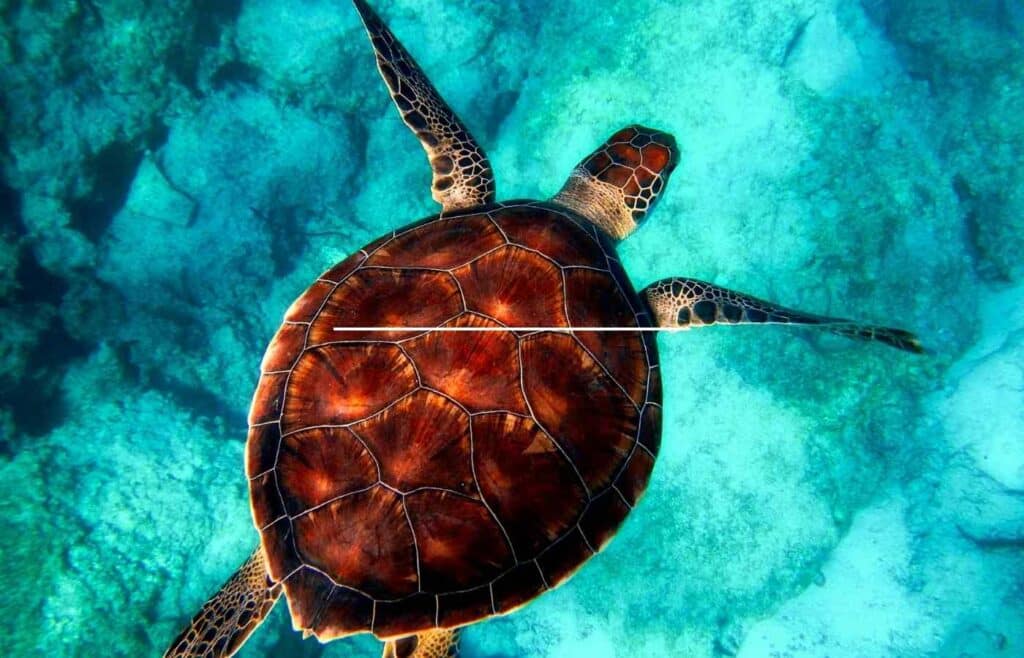
66. The number and arrangement of scutes on the shell can be used to identify different species of sea turtles.
67. The shell provides protection and support for the sea turtle’s body, but it also has some disadvantages, such as making it difficult for sea turtles to retract their limbs and head.
68. The color of a sea turtle’s shell can vary depending on the species and other factors such as diet and environment.
69. Sea turtles can shed and regrow scutes on their shell throughout their lifetime.
70. The shells of sea turtle embryos are flexible and pliable, allowing them to easily move through the narrow opening of their eggshell.
Female Sea Turtles
71. Female sea turtles can lay hundreds of eggs in a single nesting season, but they only nest every two to four years.
72. The temperature of the sand in which sea turtle eggs are laid determines the sex of the hatchlings, with warmer temperatures producing more females.
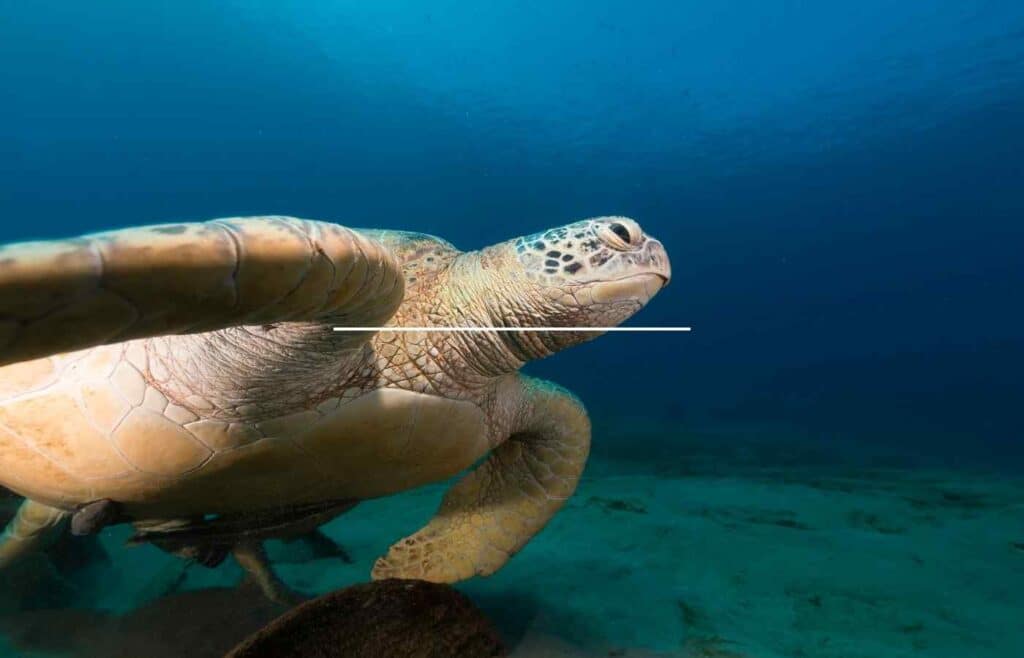
73. Some species of sea turtles are known to return to the same nesting beach year after year.
74. Female sea turtles can store sperm from multiple males and use it to fertilize eggs over time, a process known as “superfecundation.”
75. Sea turtles have an incredible ability to navigate back to their home beach after traveling thousands of miles in the open ocean.
76. Female sea turtles are the ones responsible for digging the nest, laying the eggs, and covering the nest before returning to the ocean.
77. Some female sea turtles have been known to delay their nesting until nighttime to avoid predators and overheating of the eggs.
Sea Turtles vs. Land Turtles
Sea turtles and land turtles, also known as tortoises, have several key differences:Habitat: As their names suggest, sea turtles live primarily in the ocean, while land turtles live primarily on land.
98. Physical adaptations: Sea turtles have several physical adaptations that make them well-suited to life in the ocean, such as flippers instead of legs, a streamlined shell, and the ability to hold their breath for long periods of time. Land turtles, on the other hand, have heavier, more domed shells that provide protection against predators on land.
99. Diet: Sea turtles are primarily herbivores, feeding on seagrasses and algae, while land turtles are mostly herbivores as well but may also eat insects and other small animals.
100. Reproduction: Sea turtles lay their eggs on sandy beaches near the ocean, while land turtles lay their eggs in burrows on land.
101. Migration: Many species of sea turtles migrate long distances between their feeding and nesting grounds, while land turtles generally stay in a smaller area.
102. Conservation status: Many species of sea turtles are endangered or threatened due to human activities such as pollution, habitat destruction, and overfishing. Land turtles, while also facing threats such as habitat loss, do not face the same level of risk as sea turtles.
Overall, while sea turtles and land turtles are both members of the turtle family, they have adapted to very different environments and have distinct physical, behavioral, and ecological differences.
Climate Change and Sea Turtles
Climate change and global warming can have a significant impact on sea turtles in several ways. Here are a few examples:
103. As global temperatures rise due to climate change, the balance of male and female sea turtles could shift, potentially leading to imbalanced populations. The sex of sea turtle hatchlings is determined by the temperature of the sand in which the eggs are laid. Warmer temperatures tend to produce more females, while cooler temperatures tend to produce more males.
104. Rising sea levels caused by melting glaciers and thermal expansion of seawater can lead to the loss of nesting beaches for sea turtles. This can force turtles to lay their eggs in less suitable areas or travel farther to find suitable nesting grounds, which can be energetically costly and increase the risk of predation.
105. Changes in ocean currents and temperature can affect the distribution and availability of food for sea turtles. This can lead to changes in their migration patterns or changes in the timing of their breeding seasons, which can have consequences for their survival and reproductive success.
106. Climate change can lead to more frequent and intense storms, which can damage or destroy sea turtle nesting habitats and eggs, as well as disrupt their feeding and migration patterns.
These are just a few examples of how climate change can affect sea turtles.
It’s important to note that sea turtles are already facing numerous threats, including habitat destruction, pollution, and overfishing, and climate change exacerbates these threats.
How You Can Help
Everyone can do their part to help protect sea turtles. Here are some ways kids can help:
1. Reduce your use of plastic: Plastic ocean pollution is a major threat to sea turtles, as they can mistake plastic bags and other debris for food. To help, kids can use reusable water bottles and bags, avoid single-use plastic products like straws and utensils, and recycle whenever possible.
2. Participate in beach cleanups: Beach cleanups are a great way to remove litter from the shoreline and prevent it from entering the oceans of the world. Kids can join local cleanup events or organize their own with friends and family.
3. Support organizations that work to protect sea turtles: There are many organizations that work to protect sea turtle habitats and promote conservation efforts. Kids can learn more about these organizations and consider making a donation or volunteering their time to support their work.
4. Respect sea turtle nesting areas: During nesting season, it’s important to stay away from sea turtle nesting areas and avoid disturbing the nests. This can help ensure that hatchlings have the best chance of survival.
5. Spread the word: Kids can help raise awareness about sea turtles and the challenges they face by sharing what they’ve learned with their friends, family, and community.
By taking these actions, you can help protect sea turtles and make a difference in their conservation efforts.
Conclusion
Sea turtles are just one of the many fascinating animals that inhabit our planet.
We hope that this list of 50 surprising sea turtle facts has inspired you to learn more about these amazing creatures and to take action to protect them.
And if you’re interested in discovering more about other animals, be sure to check out our other articles on monkeys, white tigers, and elephants.
By learning about these animals and the challenges they face, we can all work together to make the world a better place for both animals and humans.
So, let’s continue to explore the wonders of the natural world and take action to protect the amazing animals that call it home!
Related Posts
50 Mind-Blowing Monkey Facts Your Kids Will Love
Emperor Penguin Facts for Kids
Calie Herbst, Editor-in-Chief of Milwaukee With Kids, has spent over a decade combining her experiences as a parent of three to create a hub for Milwaukee’s family adventures.
Her decade-long teaching career in Milwaukee Public Schools and academic background, including a Master’s in Teaching from Marquette University and dual B.A.s in Sociology and Spanish from the University of Wisconsin – Madison, fuel her passion for inclusive and engaging family content.
Calie is also a recognized voice in local media, contributing to WISN Channel 12 News, WTMJ Wisconsin Morning News, Fox 6’s Real Milwaukee, and B93.3.
Discover more about Calie’s journey and editorial approach on her About Page and Editorial Policy Page.


